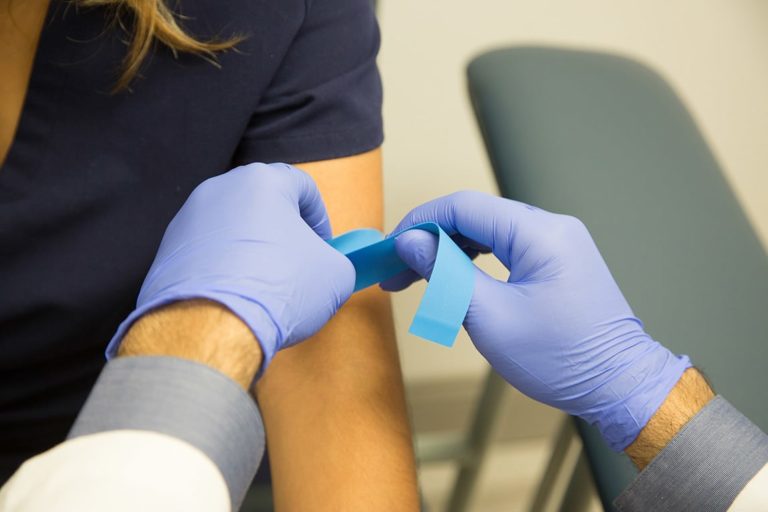How Northeast Medical Institute - New Haven Campus Phlebotomy Course & Cna Class can Save You Time, Stress, and Money.
How Northeast Medical Institute - New Haven Campus Phlebotomy Course & Cna Class can Save You Time, Stress, and Money.
Blog Article
The Main Principles Of Northeast Medical Institute - New Haven Campus Phlebotomy Course & Cna Class
Table of ContentsThe Single Strategy To Use For Northeast Medical Institute - New Haven Campus Phlebotomy Course & Cna ClassNortheast Medical Institute - New Haven Campus Phlebotomy Course & Cna Class Fundamentals ExplainedTop Guidelines Of Northeast Medical Institute - New Haven Campus Phlebotomy Course & Cna ClassNot known Facts About Northeast Medical Institute - New Haven Campus Phlebotomy Course & Cna ClassNortheast Medical Institute - New Haven Campus Phlebotomy Course & Cna Class - The FactsThe Definitive Guide to Northeast Medical Institute - New Haven Campus Phlebotomy Course & Cna Class
The usage of such devices should be come with by various other infection prevention and control techniques, and training in their usage.For settings with low sources, expense is a driving variable in procurement of safety-engineered devices - CNA Courses. Where safety-engineered tools are not offered, competent use of a needle and syringe serves. Unintentional exposure and particular details regarding an event need to be taped in a register. Support solutions should be advertised for those who go through unintentional direct exposure.
One of the necessary pens of quality of care in phlebotomy is the involvement and collaboration of the individual; this is equally useful to both the wellness employee and the patient. Clear information either composed or spoken must be readily available to each client who goes through phlebotomy. Annex F supplies example message for clarifying the blood-sampling treatment to a patient. In the blood-sampling area for an outpatient division or facility, offer a comfortable reclining couch with an arm rest.
What Does Northeast Medical Institute - New Haven Campus Phlebotomy Course & Cna Class Do?
Make sure that the indications for blood tasting are plainly defined, either in a composed protocol or in documented directions (e.g. in a laboratory type). Gather all the equipment needed for the procedure and area it within risk-free and very easy reach on a tray or trolley, making certain that all the items are clearly noticeable.
Where the patient is adult and mindful, adhere to the steps detailed listed below. Present yourself to the individual, and ask the person to state their full name. Check that the lab type matches the person's identification (i.e. match the patient's details with the lab type, to make sure exact identification). Ask whether the patent has allergies, phobias or has ever collapsed throughout previous injections or blood draws.
Make the person comfy in a supine placement (if feasible). Area a tidy paper or towel under the client's arm. Go over the test to be carried out (see Annex F) and obtain verbal authorization. The patient has a right to decline an examination any time prior to the blood sampling, so it is essential to guarantee that the client has recognized the procedure.
What Does Northeast Medical Institute - New Haven Campus Phlebotomy Course & Cna Class Do?
Prolong the patient's arm and examine the antecubital fossa or lower arm. Locate a capillary of an excellent size that shows up, straight and clear. The representation in Area 2.3, shows common settings of the vessels, yet many variations are feasible. The median cubital vein exists in between muscles and is typically the most simple to penetrate.
DO NOT place the needle where capillaries are drawing away, since this boosts the chance of a haematoma. Finding the capillary will certainly assist in figuring out the proper dimension of needle.
Haemolysis, contamination and visibility of intravenous liquid and medication can all change the results (39. Nursing staff and doctors may access central venous lines for samplings adhering to methods. Samplings from central lines lug a danger of contamination or erroneous research laboratory examination results. It serves, yet not suitable, to injure specimens when initial introducing an in-dwelling venous tool, before connecting the cannula to the intravenous liquids.
Northeast Medical Institute - New Haven Campus Phlebotomy Course & Cna Class for Dummies
Enable the location to completely dry. Failing to permit enough get in touch with time raises the risk of contamination. DO NOT touch the cleaned site; particularly, DO NOT put a finger over the capillary to direct the shaft of the subjected needle. It the website is touched, repeat the sanitation. Execute venepuncture as follows.
Ask the individual to create a hand so the capillaries are extra popular. Get in the blood vessel swiftly at a 30 level angle or much less, and remain to present the needle along the capillary at the easiest angle of entry - CNA Classes. Once enough blood has actually been collected, release the tourniquet prior to withdrawing the needle
How Northeast Medical Institute - New Haven Campus Phlebotomy Course & Cna Class can Save You Time, Stress, and Money.
Take out the needle carefully and use gentle stress to the site with a tidy gauze or dry cotton-wool sphere. Ask the client to hold the gauze or cotton woollen in position, with the arm expanded and increased. Ask the person NOT to bend the arm, due to the fact that doing so triggers a haematoma.

Northeast Medical Institute - New Haven Campus Phlebotomy Course & Cna Class for Dummies
Where possible, keep the tubes in a rack and relocate the shelf towards you - https://justpaste.it/7x310. If the sample tube does not have a rubber stopper, infuse extremely gradually into the tube as lessening the pressure and velocity utilized to transfer the specimen minimizes the danger of haemolysis.

Report this page